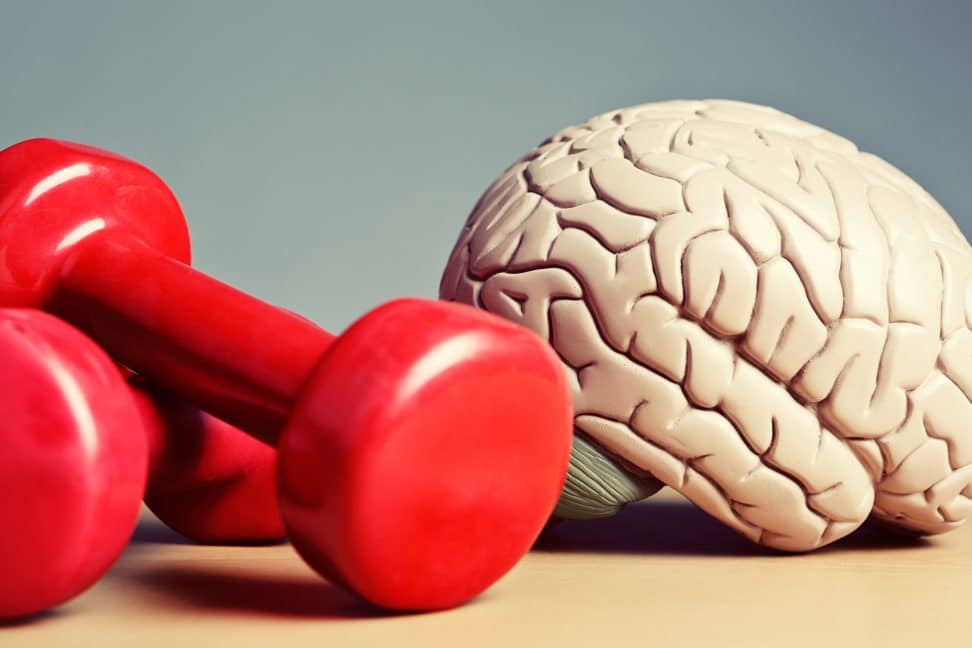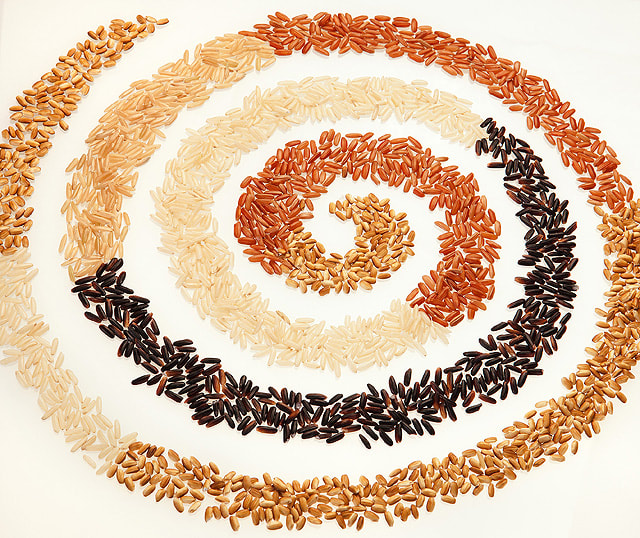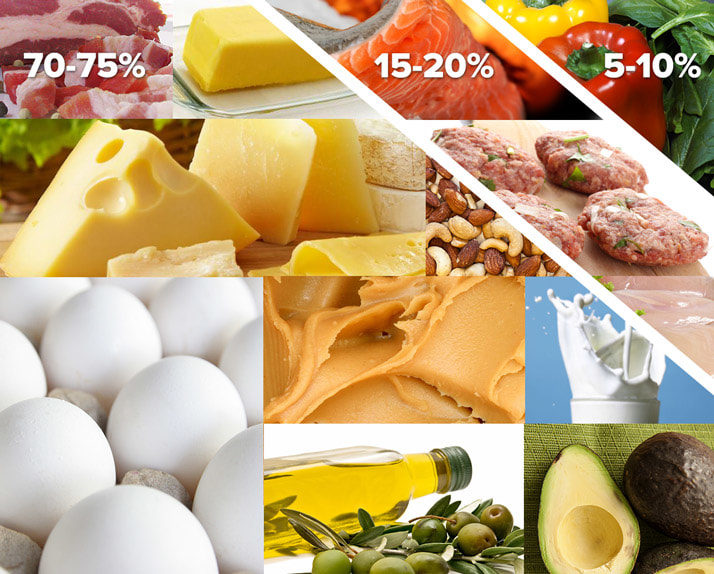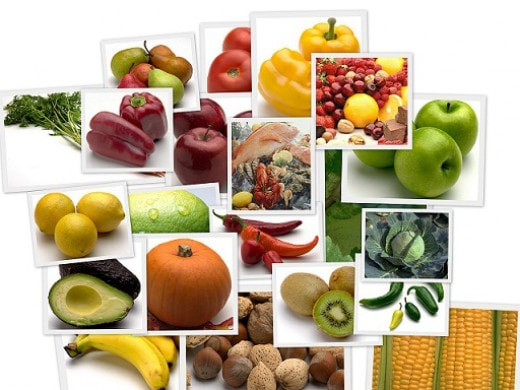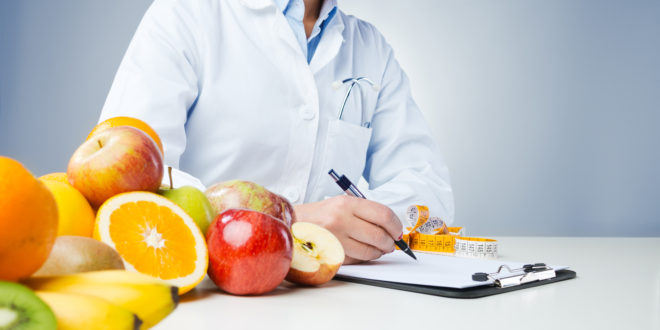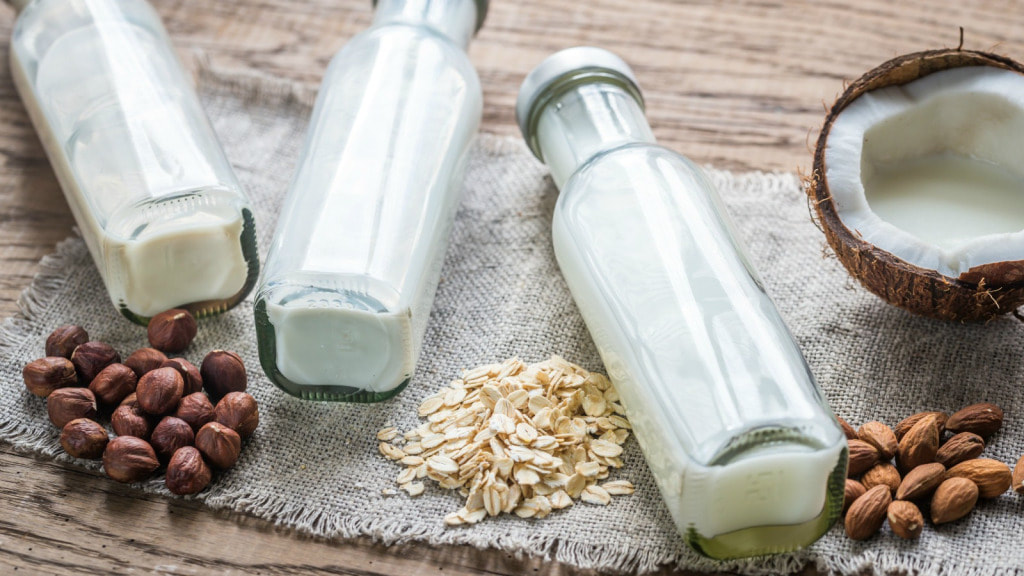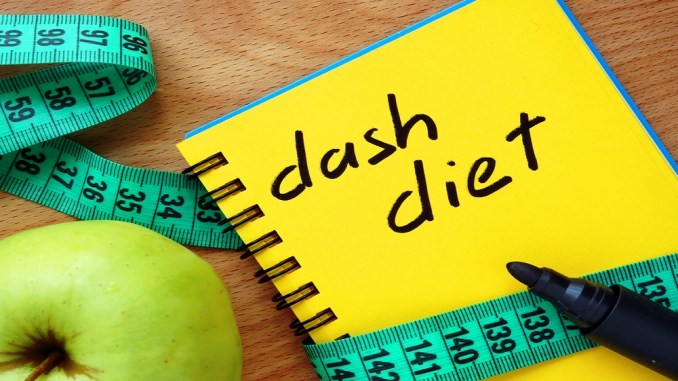|
Exercise is good for weight loss, good for health, good to stay active and the benefits go on and on. The latest addition to this list is the advantage of exercising on brain functionality. While evidence keep piling up to prove this, research has elaborately explained how working out improves brain health. Extensive research proves that:
0 Comments
While everyone is at risk for glaucoma, certain groups of people are at an increased risk than certain others. Glaucoma is the name used for a group of diseases that irreversibly damage the optic nerve resulting in decreased eyesight and finally total blindness, if left untreated. There are no early symptoms or pain in most people and it is advisable for people in the high-risk category to get their eyes tested every year. High-risk category includes those above the age of 40 and those having a family history of the disease. Individuals having diabetes or at risk for other eye diseases should also get their eyes checked regularly.
Generally, glaucoma affects older adults but risks of early-onset glaucoma depends on heredity. Structural abnormalities that affect fluid drainage in the eye may be present at birth and becomes prominent during the first year of life. These abnormalities are usually a part of a genetic disorder that can affect many body systems and is called a syndrome. Recently, people have gained more clarity on the genetic cause of glaucoma. Primary Open-angle Glaucoma (POAG) This is the most common form of glaucoma affecting almost 33 million people worldwide. No obvious abnormality in the eye can be blamed for this and mutations in several genes such as myocilin, optineurin and CYP1B1 are termed to be the causing agents, responsible for less than 10% of the cases worldwide. Large-scale genetic studies done using the blood samples of thousands of glaucoma patients have led to the discovery of more common genetic factors for POAG. Some of these factors include a change in the DNA sequence or actual loss of DNA. Primary congenital Glaucoma (PCG) This is the most common form of glaucoma that affects young children, right from birth up to 3 years of age, and leads to blindness in these kids. It affects almost 80% of infants within the first year of birth. Around 60-80 percent of cases are bilateral and it affects males more frequently (65%) than females (35%). Mutations in the CYP1B1 gene is the major cause of PCG worldwide. Primary Angle-closure Glaucoma (PACG) This is the second-most common form of glaucoma affecting around 16 million people worldwide. Here, the drainage angle closes over time blocking the pathway to the drainage system leading to increased eye pressure. Research has also found genetic variants associated with this form of glaucoma and it is still under study. Exfoliation Glaucoma (XFG) Also called as the pseudoexfoliation glaucoma, it affects millions of people around the world and is the most common form of OAG globally. XFG is inherited as a complex and late-onset disorder dominant more among the female and the aged population. XFG is associated with 20% to 60% of OAG in many countries around the world and is one of the leading causes of ocular morbidity. XFG is a result of exfoliation syndrome, a condition where white protein-like material is formed on the lens and within the fluid drainage system of the eye and in tissues all over the body. Genetic variants are associated with XFG and research is underway on the association of these variants with protein deposits and their role in glaucoma. Although these genetic discoveries are mind blowing, they are still under research and not in a stage where they can be practically used. We are still not aware how these gene abnormalities can cause glaucoma, but hopeful of a stage where treatment can be developed for every type of glaucoma cause due to gene abnormalities. As glaucoma is a polygenic condition, specific gene therapies for individual mutations is not practical but therapies to cure common pathways that lead to glaucoma is feasible. For more information on gene-related diseases, please visit the website www.firsteatright.com. Rice is the most widely consumed staple food in most parts of the world, especially in Asia. It is the third-highest produced agricultural commodity and is available in different varieties. While there are more than 40,000 varieties of cultivated rice, over 90,000 varieties of cultivated and wild species of rice are stored at the International Rice Gene Bank and used by researchers worldwide.
Any rice has three edible parts namely the bran, the germ and the endosperm. Although we feel brown rice is synonymous with whole grain rice, most of them look similarly white once the bran and the germ portions are removed. Each variety of rice has its own nutritional profile, benefits and different processing methods, but the most popular ones include white and brown rice. Even with umpteen varieties available, still white rice is the most commonly consumed rice type feeding over half the global population contributing to one-fifth of their calories consumed. Red, Brown, Purple and More… The nutritional value of any rice differs according to the soil used to grow the rice, polishing or processing methods used, the way it is enriched and finally the preparation method used to cook the rice. The first step after harvesting any rice is to remove the hull from it to make the rice edible. Further milling can remove the bran and germ portion giving you the most-popular white rice. Color, Color What Color Do You Choose? White Rice The staple food of different Asian countries, white rice is the result of removal of the husk, bran and germ which also removes many of the key nutrients such as vitamins, iron, zinc and magnesium. Further, short-grain white rice has a high glycemic index making it disadvantageous to health. Still, white rice is extremely versatile and used in innumerable international dishes. Parboiled Rice Parboiled rice gets its name so because it is partially boiled in the husk. This step makes it almost 80 percent similar to brown rice with better fiber, calcium and potassium content than white rice. It contains a lower glycemic index than white rice and can be used as a replacement for white rice, with better nutrients. Brown Rice Brown rice is produced when only the outermost layer of a grain of rice (the husk) is removed. It undergoes minimal processing retaining most of the nutrients like calcium, magnesium, thiamine, potassium, fiber and protein. Having a shelf life of almost 6 months, it needs longer cooking time. Black or Purple Rice A spoonful of black rice provides you more antioxidants than blueberries with less sugar and more fiber. The black rice turns deep purple after cooking because of the anthocyanin (antioxidant) content. Black rice is also rich in iron and vitamin E. Red Rice Red rice also derives its color from anthocyanins, like black rice. This antioxidant safeguards our body against heart diseases, diabetes and cancer. Research has proved red rice to be the best among all rice types for its rich nutrition content. It has got 10 times the antioxidant content of brown rice and contributes to almost 20 percent of the daily values of magnesium, phosphorus and molybdenum. Germinated Brown Rice Germinated brown rice is usually soaked in water between 8 and 24 hours to trigger germination. This increases the nutritional value and also helps to decrease oxidative stress. Ready to Shift Gears? It is clearly identified that colored rice has better health potential than white rice. Nutrition studies quote that the pigment in red and black rice are protective against chronic diseases. Certain studies reveal that the rice bran provides protection against cancers of the breast, lungs, colorectal and liver. The phytochemicals present in the rice bran protect against tissue damage by free radicals. There are also specialty rices such as basmati, jasmine, japonica and risotto. Providing 20% of the world’s dietary energy supply, every 100 grams of cooked white rice supplies 130 calories. Being the most important plant-based food, it can be consumed along with fruits, vegetables, whole grains and legumes. Get in touch with a registered dietitian nutritionist at www.firsteatright.com to plan the correct rice portions that can be incorporated in your daily diet schedule for a healthy meal. Almost 85 percent of women in their childbearing years suffer from some form of premenstrual syndrome. Tender breasts, weight gain, bloating, abdominal pain, swelling in feet, hands and ankles, headaches, anxiety and depression are some of the most common symptoms.
The main reason behind PMS is still unknown, even after extensive research in this area. This medical condition can be diagnosed only by your physician and once you are diagnosed with PMS, your doctor would ask you to maintain a symptom log where you are asked to note any physical, emotional and mental changes that occur during a time span of two to three months. This helps to answer questions such as: What is the time duration of a symptom? When does it occur? Does a certain food or beverage trigger this symptom? Do you gain more weight at a certain time in your cycle? Diet and PMS While there is no preventive measure against PMS, leading a healthy lifestyle and choosing nutritious foods can help relieve some of the symptoms. Effective techniques to minimize symptoms include:
Walking is the most common physical activity among adults across all age groups. Feasible for everyone without any cost, be it children, elderly, people with disabilities or even those on crutches, walking is an excellent way to be more active. If you have never tried any physical activity previously and is eager to pursue one, start with walking.
Why Should You Walk? Brisk walking helps an individual in umpteen ways. It aids to:
While walking is the simplest physical activity that can be performed by any individual, there are certain individuals who need to meet their physician before starting to walk. This includes:
How Long Do I Walk? Brisk walking is a moderate-intensity aerobic activity that increases your heart rate and breathing. Adults need about 150 minutes of moderate-intensity workout every week to stay fit and healthy. Try to walk briskly for 30 minutes on at least 5 days a week to meet your target of 150 minutes per week. Slowly try to increase it to 300 minutes per week, which equals to 1 hour of walk every day on at least 5 days of the week. It is always better to finish an activity in one stretch. But, when under time constraint, you can split your activity into three 15-minute slots or three 10-minute slots. For Beginners Walking needs no preparation and no allocated time or place. People can walk wherever they want to walk and at whichever time they feel like walking. Following these four steps can make walking simpler and enjoyable: Make Smart Small Goals to Reach Your One Big Goal You cannot cover 10 km in one hour simply because you have started to walk. Initially, walk for 15 to 20 minutes at least thrice a week. Gradually increase this time duration to 30 minutes on 5 days/week. Plan on reaching a specific target weight or covering a target distance in 6 months or 1 year of time and work towards this target. Equip Properly The most essential thing for a good day’s walk is a pair of flexible shoes that fit right. Wear loose-fitting clothes that help you stay comfortable. On windy days, wear a scarf to cover your ears and a jacket to keep yourself warm. How to Go About the Walking Process? You should not start walking at a rapid speed just like that. Warm up by walking slowly for 5 minutes, increase your pace into a brisk walk and again cool down slowly during the last five minutes of your walk. Introduce Twists and Challenges After some time, when you feel that you can easily cover your target without any pressure, bring in some self-imposed targets and challenges. You can try to walk in a hilly area or climb steps in between your walks to make it challenging. Walking Should Become a Daily Routine Walking should become a daily ritual just like brushing your teeth or eating food. To keep it lively and doable:
The history of the ketogenic diet dates to the 1920s where it was used to treat epilepsy. But presently, the diet is used for all purposes other than its main objective.
The ketogenic diet is a very low-carb, high-fat diet that is similar to the Atkins and other low-carb diets in various ways. The reduction in carbs puts the body into a metabolic state called ketosis (fat instead of carbs provides energy for the body) and hence, the name ‘ketogenic diet’. The macronutrient composition of a ketogenic diet has 70-80% fat, 10-20% protein and 5-10% carbohydrates. One might wonder looking at these statistics on the efficiency of this diet which stresses on increased fat intakes. But various studies have compared this diet with the traditional low-fat/high-carb diets and the results show that the ketogenic diet is effective. When a person consumes less than 50 grams of carbs per day, production of insulin hormone is reduced drastically. Insulin helps glucose from the bloodstream to reach the cells where it is used for energy. When carbs consumption is high, insulin is constantly produced and much of the glucose is converted into body fat, leading to increased risk of diabetes and heart disease. But a ketogenic diet makes your body produce less insulin and prevents any of these health risks. What you ‘Can’ & ‘Cannot’ Eat? Allowed are fresh salmon, pastured eggs, beef, nuts and seeds, non-starchy veggies, avocados, grass-fed butter and ghee, cheese and healthy oils such as extra virgin olive oil, coconut oil and avocado oil. Disallowed are sugary foods such as soda, cakes and ice creams, all kinds of fruits, grains, low-fat or diet foods, alcohol, beans or legumes, tubers and root veggies and anything that increases insulin and blood glucose levels. Eliminating processed carbs from your diet eliminates the bad gut bacteria and eating foods allowed in the ketogenic diet provides a thriving ground for the good gut bacteria which helps to clear the digestive tract. How Do You Benefit from a Ketogenic Diet? Following a ketogenic diet helps in:
No single diet works favorable for everyone. The best diet plan is the one that works advantageous to your body type. Although the initial side effects of a ketogenic diet are less hazardous ones such as mild low blood sugar, constipation and indigestion, sometimes, low-carb diets can lead to kidney stones or acidosis (high acid levels) in the body. Also, starting on a ketogenic diet and going back to a normal diet for an obese person is tricky as you can develop diabetes, heart disease or high blood pressure. The best diet plan is the one that offers a well-balanced mix of foods from all five food groups along with active physical exercise every day. If you are a health-conscious person who wants to become fitter or lose weight in a healthy way, you can get in touch with a registered dietitian nutritionist at www.firsteatright.com to help you plan a healthy diet plan for weight loss or any other purpose of yours in the healthiest way. Almost 18 percent of Indian women are affected by a hormonal disorder called polycystic ovarian syndrome. Women affected by PCOS have too much insulin in the body as their body does not use insulin well. This excess insulin increases the production of androgen – a male hormone made in fat cells, ovaries and adrenal glands.
PCOS Symptoms PCOS is hereditary although the exact reason is unknown. Common symptoms include:
Diet and PCOS Lifestyle modification is the only way to manage PCOS. Research proves that altering eating habits and exercising more are the best lifestyle adaptations to fight against PCOS. A moderate weight loss (5-10 percent of total body weight) can alter everything-normalize menstrual cycles, regulate blood sugar and increase fertility. Changes in eating habits include eating more whole-grain foods, fruits, vegetables, lean meat, low-fat or fat-free milk, cheese and yogurt to lower blood sugar, improve body’s use of insulin and normalize hormone levels. A registered dietitian nutritionist is the apt person to guide you and alleviate your PCOS symptoms with diet modifications. Get in touch with an RDN at www.firsteatright.com to plan a well-balanced diet plan to suit your hormonal disorder. Given below is a healthy eating plan for women with PCOS:
Daily exercise definitely lowers the symptoms of PCOS. Start with at least 30 minutes of moderate-intensity physical activity on most days of the week. People planning to lose weight must perform additional physical activity. Include strength-training exercises at least two times a week. Eating nutritious foods and doing exercise are not good enough to live disease-free. You also need to follow hygienic practices to stay healthy. Handwashing is the first and foremost hygiene technique to be followed before preparing food or doing any kind of activity. It is simple, quick, effective and prevents us from becoming victims to germs.
When do you Wash your Hands? We use our hands often during the day and it is practically impossible to keep them germ-free. But at least, we can try to keep our hands as clean as possible to restrict bacteria prevalence. Take care to wash your hands:
You may find it silly discussing about an everyday practice that each one of us is familiar with. But, do all of us take care and wash our hands perfectly rubbing them between finger joints and taking the pain to use a disinfectant every time? The answer is definitely a ‘no’. So, what does a proper hand wash involve: Wet, lathe, scrub, rinse and dry. Wet your hands with running water (hot or cold). Lathe your hands with soap after closing the tap. Lathe well on both sides of your hands, between your fingers and under your nails. Scrub these parts for at least 20 seconds (just count from one to twenty). Rinse your hands thoroughly starting from the wrist to the fingertips to prevent germs from reentering your hands. Dry your hands with a towel (paper or cloth) or an air dryer. Even young children should be taught this five-step hand washing technique. An ideal way to make children wash their hands for 20 seconds is to make them sing the ‘Happy birthday’ song twice. If your kid is unable to reach the wash basin on her/his own, surprise him/her with a colorful stool onto which they can climb over to reach the sink. Alcohol-based sanitizers, that contain at least 60% alcohol, are the best options when there is no soap and water available right then. All you need to do is take a small quantity of the sanitizer and rub your hands together, spreading the product until your hands are dry. Insist on Washing Hands Whenever Possible Promote the advantages of hand washing to your children and ask them to wash their hands several times a day and not just before and after a meal. If your child is using an alcohol-based sanitizer, be sure to stay besides your child to ensure that the sanitizer completely dries before touching anything. Though a simple habit, you can reap the great reward of preventing illness and protecting health when you follow proper hand washing techniques. If you are further interested in uplifting your nutrition quotient for a healthy life, get in touch with a dietitian/nutritionist at www.firsteatright.com. Burping is embarrassing but with a few simple corrections you can thwart it.
With each of us concerned about the obesity epidemic, a strict adherence to a healthy diet seems to be a welcoming thing. But, when this adherence becomes an obsession, it is a matter of utmost concern. Known as orthorexia (emerging disordered eating pattern), people with this obsession stay away from food that is not “pure”, avoid foods once they loved to eat (this is common among women), start skipping family meals or dinners outside and are extremely hesitant to eat a meal which has not been prepared with their own hands.
Orthorexia Briefed Though introduced in the 90s, orthorexia has been gaining popularity in the recent years because of food marketing gimmicks for organic foods along with hyped dietary instructions by the media. In orthorexia, unlike anorexia nervosa, quality and not quantity of food is of utmost concern. Coming across the word anorexia nervosa for the first time? Know what it is all about from the website www.firsteatright.com. Although the goal of orthorexia is to become healthier initially, the intention becomes extreme such that the person does not touch any food that does not carry the organic or whole food label in it. These people also avoid everything processed, from white flour to sugar. Even whole-grain bread which is healthy and full of fiber is not consumed as it has been processed in some way. While orthorexics don’t fear putting on weight as in the case of an anorexic, characteristics of obsession and the progressive nature of the disorder is similar. They slowly start eliminating food groups starting with dairy or grains. Gradually they chop off yet another food group, and another, with the motive of following a “perfectly clean” healthy diet. Eventually, orthorexia leads to malnourishment as many critical nutrients are eliminated from the diet. Orthorexics Don’t Have a Healthy Relationship with Food Sharing leads to bonding between people in the society. But orthorexics find family meals to be a minefield as they are extremely anxious of the method of food preparation and don’t find it to be pure. When someone exhibits increased signs of anxiety around foods because they are not consuming what they want to eat or the amount that they want to eat, these are sure signs of orthorexia. While most of us enjoy eating food, people suffering from orthorexia don’t feel the same with good food and are far away from a healthy relationship with food. Such people feel blessed when they eat foods that they feel safe or neat and can yield to self-loathing and anxiety when they deviate from their self-imposed extreme diet restrictions. Battling Against Orthorexia People suffering from orthorexia need professional help as early as possible which can otherwise lead to serious mental and physical health consequences. If you suspect someone to be affected by this disorder, it is best recommended that you advise the person to meet a therapist, at least for a one-time consultation. Don’t put out the statement bluntly, but take care to keep it as polite as possible. Something like, “Why don’t you talk to someone to confirm that this is normal” would be far better than “You must meet the therapist immediately.” Orthorexics are like the half-filled bucket. They neither have complete understanding about food and nutrition nor are they unaware of it totally. These people have knowledge about food and food science from sources such a magazines, blogs and videos that might not be authentic. Registered dietitian nutritionists deal such patients with one simple but worthy question which asks the client to mention the list of things that they miss out because of self-imposed eating rules such as these. RDNs further feel that these people may succumb to isolation if the disorder is not treated immediately. A baby starts tasting flavors right inside the mother’s womb. Researchers claim that a baby’s sensory system helps the baby to taste flavors from a mother’s diet as the food travels through the mother’s bloodstream into the amniotic fluid.
Breast milk Familiarizes the Baby to Different Flavors Once the baby is born, it again starts tasting different flavors via the mother’s milk. Spices, herbs and foods like garlic and onion give breast milk a unique taste and this serves as the first step to introducing your baby to different food tastes. Mothers are recommended to eat a variety of fruits and vegetables along with other nutrient-rich foods to make breastmilk healthy for your newborn. While common misconceptions exist that one particular food can cause fussiness or digestive discomforts in your baby, the reality is that your baby can cry for different reasons and the mother’s diet is not the culprit for this. Repeat New Foods Children like familiarity. They are hesitant to try new things and may want the same food repeatedly until they may feel the urge for some other food. Rejecting a food does not mean that your little one hates it. Try to reintroduce the same food after a few days to make your baby familiar with the new food. Instead of pressurizing your child to eat nutritious foods, be your child’s role model by consuming healthy foods. Make mealtimes enjoyable by having meals together and introduce your kids to new foods gradually. Introducing solid foods can be intimidating to the parents and the website www.firsteatright.com is there to help you cross this important juncture of life by providing you with practical tips and guidelines for this purpose. As the child grows up and starts eating with everyone else at the dinner table, season the foods with cinnamon, curry powder, cilantro, chili powder, garlic or any other seasoning that is a part of your family’s food habits. Never keep spicy seasonings such as cayenne pepper or hot sauce that may irritate your baby’s mouth or tongue. Prepare foods with minimum salt to get the baby used to the natural flavors or lightly salted foods. Neonates require nothing other than the nutritious breast milk or formula milk to maintain required fluid levels in the body. Read more on the advantages of breast milk at www.firsteatright.com. If the child has diarrhea or vomiting, fluid replacement options should be discussed with your pediatrician. Your doctor/pediatrician might suggest an oral electrolyte maintenance solution instead of water or juice to prevent dehydration. This is because, the solution contains glucose and minerals (sodium, chloride and potassium) called electrolytes which help to maintain fluid balance in your baby’s body cells. These minerals are flushed out through body fluids when the baby suffers from diarrhea or vomiting.
If your baby is under two years of age (or older too), never feed an oral electrolyte maintenance solution without consulting your pediatrician. Ailments such as diarrhea and vomiting can further indicate the possibilities of other illness apart from dehydration that might need medical treatment. If diarrhea or vomiting continues past the first 24 hours, get in touch with your doctor. An electrolyte maintenance solution is only like a first aid that prevents dehydration and there is no guarantee that it will stop diarrhea or vomiting. Every nutrient is required in certain quantities to maintain balance in our total health. Nutrition guidelines recommend individuals to eat certain quantities of vitamins and minerals. Giving the exact quantity of such nutrients makes it easier to understand. Such planned food intakes help to avoid nutritional deficiencies and their related diseases, such as scurvy (lack of vitamin C) or pellagra (lack of niacin).
Most nutrients don’t fly solo but interact with each other. They stay together for some purpose sometimes and cancel out each other some other times. Although we have heard often that eating whole foods rich in vitamin or any other nutrient is better than its supplement, most of us ignore its seriousness. The main reason behind this recommendation is that, food contains a number of nutrients that interact with one another in each mouthful. We have given here the most common pair of nutrients that work together. This is just a sample and far from the complete catalog, but this will help you to choose what you want to eat. Vitamin D and Calcium Calcium required for strong bones is mostly absorbed in the small intestine and works best when it is combined with vitamin D. Vitamin D helps to absorb maximum calcium and provides our body with other benefits as well. Official nutrition guidelines recommend adults to get 1,000 milligrams (mg) of calcium and 400 international units (IU) of vitamin D daily. Older adults need a little extra than the rest: 1,200 mg of calcium in your 50s and 600 IU of vitamin D in your 70s. To give you a day-to-day example, drinking 235ml of milk packs your body with 300 mg of calcium and 100 IU of vitamin D (because of fortification). Sodium and Potassium Most of us consume more sodium than needed (in salt form). Excess sodium levels in the body leads to increased blood pressure levels and increases the chances of stroke or heart attack. But, when you eat potassium-rich foods such as fruits and vegetables, it encourages kidneys to excrete sodium. Decreased intake of cookies, salty snacks, fast foods and ready-made lunches and dinners also help to lower sodium levels. Research shows that increased potassium intake is related to lower blood pressure levels. The official guidelines suggest adults to get 4,700 mg of potassium and 1,200 mg-1,500 mg of sodium daily. Vitamin B12 and Folate Nutrition’s best couple award goes to vitamin B12 and folate (one of the eight B vitamins). B12 helps folate absorption and these two nutrients work together to support cell division and replication, which helps the body to replace cells that die. This process is important during childhood as well as during the adult stages because, cells that line the stomach and the cells of the hair follicle divide and replicate often. Nutrition guidelines recommend 2.4 micrograms of B12 and 400 micrograms of folate daily. Women in childbearing age require additional folate quantities due to its plentiful advantages as mentioned in the link www.firsteatright.com. Eat plenty of leafy green vegetables, beans and other legumes for natural folate and foods such as meat, eggs and milk for vitamin B12. But, people who don’t eat meat or other animal-based products may have B12 deficiencies while people who have a poor appetite or drink too much alcohol may have folate deficiencies. Multivitamins or folic acid pills can correct folate deficiencies and you can get an injection every few months or take pills daily to correct B12 deficiencies. Macrocytic anemia is indicative of these vitamin deficiencies while B12 deficiency can lead to memory loss and mild tingling sensations. Zinc and Copper Copper and zinc don’t behave as friends, but as foes competing against each other to be absorbed into the small intestine. Too much of zinc can make copper lose the fight resulting in copper deficiencies. This was greatly evident while treating people for macular degeneration using a special vitamin-mineral combination called AREDS. This pill includes 80 mg of zinc, which is more than enough to cause copper deficiency and hence, a 2 mg of copper was added to the pills. These pills slow down the progression of the disease, which can otherwise lead to blindness. Niacin and Tryptophan Niacin or vitamin B3 (rarely called by this name) deficiency can cause pellagra which is characterized by bad rashes, diarrhea and dementia. The daily niacin requirement is 16 mg for men and 14 mg for women. Tryptophan, an amino acid, is a source of niacin and one can eat foods like chicken and turkey that are packed with this amino acid to avoid niacin shortfalls. All five fingers are not the same. Likewise, all body types are not similar. Are you having a pear-shaped body like Beyonce and Malaika Arora Khan or an apple-shaped body like Oprah Winfrey and Angelina Jolie (slim apple-shaped body)???
A new study of more than 430,000 people has found that having an apple-shaped body increases the chances of being affected by diabetes and heart diseases. Putting on weight is a frustrating issue and when your health and figure depends on where the fat addition happens, it is even more irritating. Along with your diet and exercise, hormonal imbalance and genetics play a critical role in deciding how and where you gain weight. So, there is no one-size-fits-all theory and every person needs a different nutrition and exercise chart that fits his/her body type-apple, pear, hourglass and box. Apple and pear are the most prevalent body types and the accumulation of fat in the abdomen, hips, waist or thighs depends on specific hormones that have a great effect on the health of the body. Apple Shape People in this category have most of their fat stores, subcutaneous and visceral, around the abdominal area and have a larger waist. Visceral fat is the main culprit increasing the risk of high cholesterol, high blood pressure and insulin intolerance in apple-shaped bodies because it surrounds the body’s vital organs and produces hormones and chemicals that tamper with blood pressure, cholesterol and blood sugar levels that are controlled by insulin. Men and post-menopausal women mostly have an apple-shaped body. Insulin level depends on carbohydrate intake and consuming low-GI carbohydrate foods such as fruits, vegetables, berries and legumes along with some lean protein and healthy fats (avocados, almonds, fatty fish, chia seeds, ground flax seeds and olive oil) improve insulin response. If you are unaware of the low-GI and high-GI foods, it is better to visit the website www.firsteatright.com to get the complete list. Pear Shape People in this category have most of their fat stores around the hips and thighs which is difficult to lose but healthy in terms of insulin resistance and cholesterol levels. Also, energy from thigh stores are utilized during pregnancy and breastfeeding. Fat stores in women differ according to their age. Younger and middle-aged women have a pear-shaped body because of increased estrogen levels that accumulate fat around the hips. Post-menopause women have an apple-shaped body as estrogen level gradually decreases and fat deposits happen above the belt. Fiber-rich foods such as whole grains, fruits, vegetables, nuts, seeds and legumes slow insulin release and must be included in the daily diet plan. Pear-shaped people must consume a diet rich in fiber and low in sodium along with balanced levels of organic protein, low-fat organic dairy and limited amounts of healthy fats (nuts, seeds, avocados and olives). On a General Note Losing weight and maintaining a fit body can be done through a balanced combination of physical exercise, nutritious food, stress management and adequate sleep. Only when all these four are in proper sync with one another, hormone balance and proper energy levels are feasible. If there is even a slight deviation from the normal hormone levels, it is advisable to meet your physician. Also, consult with a registered dietitian nutritionist to make a customized meal plan suiting your body type and health conditions. A registered dietitian nutritionist is a food and nutrition expert who has the following accreditations:
These registered dietitian nutritionists are not only food and nutrition experts but are also pioneers in the dietetics field. The members of the dietetic association strive hard in every possible way to advance their knowledge and skills and contribute their best for the good health of the society. Interested in speaking to an RDN about your weight and health concerns? If so, www.firsteatright.com is the felicitous place to meet your game changer for health. Milking cattle for human use started in the New Stone Age (Neolithic) in Southwest Asia. India is the top producer of buffalo milk and second only to U.S. in the production of cow’s milk. Every one of us would have been rigorously trained to drink a glass of milk before going to bed for its rich calcium content and whole milk was the only option available right then. Today, we have different varieties of milk such as reduced-fat milk, low-fat milk and fat-free milk. But what about vegans and individuals with lactose intolerance? Plant-based milk is the best option for such people and here again, you have quite many options to choose from. A Small Introduction to the Big Lactose Intolerance Lactose is a type of natural sugar found in milk products and lactose intolerance is the condition where the body is unable to digest lactose easily. This condition exists when the small intestine is unable to secrete the enzyme lactase, needed to break down or digest lactose. Though nothing can beat the nutrients present in a glass of cow’s/buffalo milk, individuals with lactose intolerance can choose from non-dairy alternatives to compensate for the lost dairy nutrients. Some interesting plant-based options include:
Tabulated below are the nutrition content of the above-mentioned milk forms. The nutrition value is calculated for one cup (244 grams) consumed:
Get in touch with a registered dietitian nutritionist at www.firsteatright.com to help you plan a healthy diet plan for lactose intolerance while maintaining the nutritional balance.
Dietary Approaches to Stop Hypertension (DASH) diet is rich in fruits and vegetables and low in sodium and hence, helps to stop hypertension. Individuals who follow this diet along with exercise have increased chances of lowering their blood pressure and cardiovascular risk factors.
Although DASH diet is predominantly for reduced blood pressure levels, it is recently being used for its weight loss advantages as well as for the fact that, the diet plan is high in fiber, low in saturated fats and sugars. The entire family can pursue this diet as it reduces the risk of stroke, heart disease and kidney stones too. A brief glimpse of the DASH diet and the advantages of a healthy lifestyle are discussed below. Are you Eating Colorful Produce? Potassium which plays an effective role in lowering blood pressure levels is present abundantly in fruits and vegetables. Low levels of potassium are related to high hypertension levels. A diet rich in natural plant foods which are low in fat and high in fiber can provide adequate potassium levels to reduce hypertension and support weight loss. Choose Low-Fat Dairy Foods Eat low-fat or fat-free dairy as an increase in weight can lead to hypertension. While dairy foods are a great source of calcium (needed for strong bones and blood pressure regulation), high-fat dairy contains saturated fats that are not good for heart health. Eating foods high in saturated fats can lead to weight gain, excess calories and increased risk of heart disease. Nutty Delights Unsalted nuts are packed with monounsaturated fats that help to lower bad cholesterol (LDL) and increase good cholesterol (HDL). Nuts are beneficial in various ways right from reducing damage to blood vessels to keeping them healthy for unrestricted blood flow. Different nuts serve different purposes and each of its advantages are available in the website www.firsteatright.com. Decrease Saturated Fat Intakes DASH diet which is low in saturated fats, sodium and total fat helps to decrease the risk of heart disease and hypertension. A low-fat diet with a healthy body weight decreases the risk of high blood pressure, diabetes and heart complications. What Next? Along with a DASH diet please include: Weight management: A healthy body weight is ideal for good health. Overweight/obese individuals, especially those with excess abdominal fat, are more prone to diabetes, heart disease and high blood pressure levels. A BMI between 18.5 and 24.9 is healthy and if you are out of these ranges, it is better to seek the help of a registered dietitian nutritionist to help you with a suitable weight management plan according to your BMI. Physical Activity: Overall fitness along with a healthy heart is required to climb a simple set of stairs without a huff and a puff. Regular aerobic exercise, for 60 minutes daily or at least 150 minutes every week, is needed to reduce blood pressure levels. Restricted Alcohol Intake: Men should limit alcohol intake to two or less drinks per day and women should drink not more than one drink per day. Such limitations help to manage proper weight and reduce blood pressure. |
AVOID FRAUD. EAT SMART.+91 7846 800 800
AuthorDietitian & Nutritionist Dr. Nafeesa Imteyaz. Archives
July 2024
Categories
All
Dr. Nafeesa's Blog @blogspot |
- Home
- Written Testimonials
- Consult
- Clinics
- Blogs
-
Diet & Nutrition
- Diabetes Reversal
- IVF IUI not needed for PCOS PCOD Infertility
-
Medical Nutrition
>
-
Disease & Conditions
>
- Infertility | PCOS
- Diabetes Mellitus
- Cholesterol
- Hypothyroid
- Kidney Problems
- Hypertension
- Cardiovascular Diseases
- Liver Diseases
- Gastro intestinal disorder
- Cancer
- Metabolic Disorders
- Orthopedic Disorders
- Eating Disorders
- Dietary Recall
- Weight Record Filled By Clients
- Online Payment Transaction Details
- Online Clients Weight Check Form
- Our Program Package Service Charges
- Weight Record 2017 Clients
- Measurements sent by Clients
- Terms & Conditions Of Payment
- Thanks. Your Form is Submitted
- Video Testimonials
- Lifestyle & Wellness
- Lifestyle & Wellness Blog
- Allergy & Intolerance
- Weight Loss / Gain
- Weight Loss / Slimming Blog
-
Disease & Conditions
>
- Life Cycle Nutrition >
- Sports Nutrition >
- Integrity in Nutrition
- Knowledge Centre
© COPYRIGHT 2022. ALL RIGHTS RESERVED. FRST HEALTHCARE PVT LTD.
Dr. Nafeesa Imteyaz of First Eat Right clinic, is the Best Dietitian Nutritionist in Bangalore. Best Dietitian Nutritionist in Pune. Best Dietitian Nutritionist in Hyderabad. Best Dietitian Nutritionist in Chennai. Best Dietitian Nutritionist in Mumbai. Best Dietitian Nutritionist in Delhi. Best Dietitian Nutritionist in Kolkata.

